
F-104C

The
F-104 first flew in 1954 and set a number of speed and
altitude records
early in it's career. Since there is a wealth of information
available
on the 104 I'm not going to do an in depth history here. The
'C' model
was an effort to field a tactical fighter-bomber/interceptor
version of
the Starfighter to replace the North American F-100 Super
Sabre. It was
similar in design to the F-104A, but it featured a much more
powerful
J79-GE-7A engine, a fixed but removable refueling probe,
provisions for
additional bomb pylons and under fuselage pylons for eventual
Sidewinder missiles. Lockheed produced a total of 77 F-104Cs.
The
Kit
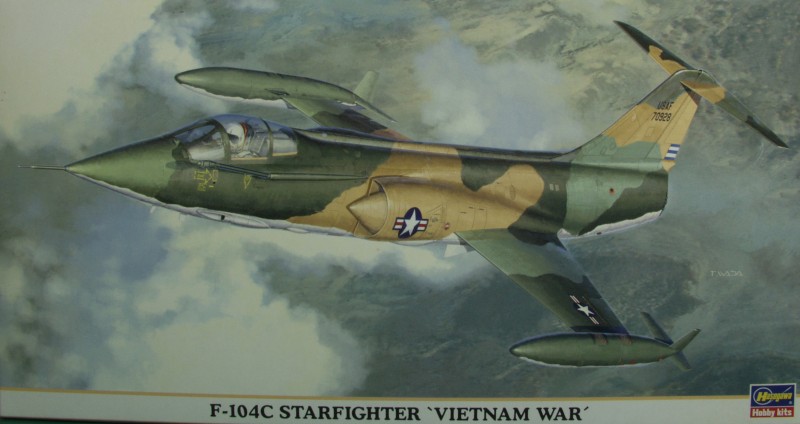
The Hasegawa F-104C comes in a conventional top open tray style box from thin cardboard and features nice artwork on the top. I purchased my kit off eBay so I can't comment on how the kit was packed when new. All the sprues with the exception of the clear parts were not bagged and a number of parts had come off the sprues. Fortunately none appear to have suffered any damage. The kit is molded in a light gray color and features recessed panel lines, rivet and fastener detail with some raised detail where applicable. The kit is virtually flash free, not bad for a kit that was released 15 years ago.
The wings and all trailing edge surfaces are commendably thin. This is achieved at the wing tips by having the lower wing half end prior to the tip. This appears to be on a natural panel line so should not require filler. I found no obvious surface defects on my kit other than some light scuffing from the sprues not having been bagged. Ejector pin marks however are in abundance. Inside the gear bay doors, one side of the gear struts and the back side of the tires. Many of these are light and could be ignored but a few, like those on the tires, will need to be fixed.
From a detail stand point the kit seems quite nice. The cockpit is well done with a 13 part bang seat, cockpit tub, rear bulkhead, stick and throttle. The tub has nice raised detail on the side consoles as does the instrument panel. Decals are provided for the instrument panel and side consoles. The gear bays are nicely detailed, especially the nose gear bay considering how deep it is. One unusual feature is the use of polycaps for the main and nose gear mounts. The wings have separate parts for the slats and control surfaces, the tail parts are molded in the neutral position. Tip tanks are supplied and feature separate fins and filler caps. Missile launching rails are supplied for under the fuselage but one needs to drill out the mounting holes prior to assembling the fuselage halves. No missiles are supplied with the kit. No intake trunking is supplied as you really couldn't see much of it through the small openings. The back end has the rear turbine and flame holder, which will block the view of the rear turbine and a very nicely done set of turkey feathers for the exhaust. Nice enough, that to me anyway, a resin replacement would be a waste of money. The landing gear is nicely detailed except for those injector pin marks. The kit comes with two sets of main tires, one set larger for later versions and some different wheel hubs. The tires are one piece which is nice with separate inner and outer hubs, also nice. Air brake doors are supplied with inside detail if you wish to pose them open, however these are never open on the ground as they close automatically when engine power is reduced. There are a number of small round clear plugs that can be installed in various places on the fuselage and tip tanks. These are optional and I assume represent inspection windows. The notes calling these out are quite small. OK, lets look at the parts...
First up are the fuselage half sprues which also have the nose cone halves and intakes. One can see the interior structure detail for the air brakes. There is a small vent below the cockpit area that is molded open and the gun port is also molded open.
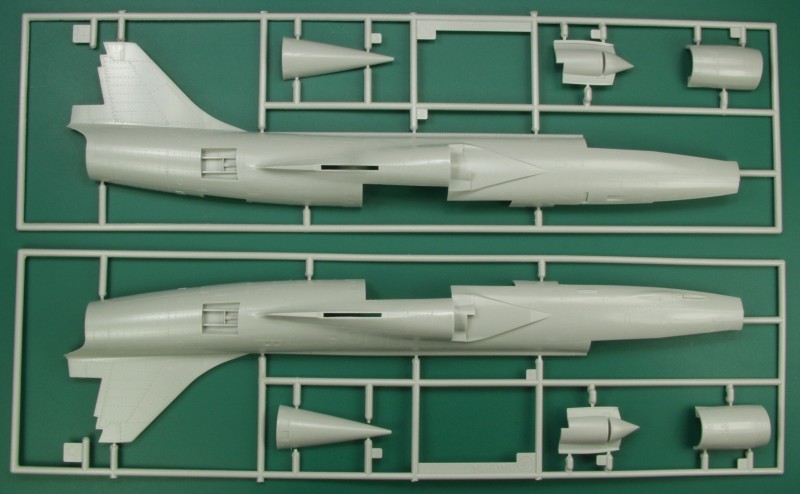
Next up is the upper wing parts and gear bay doors.
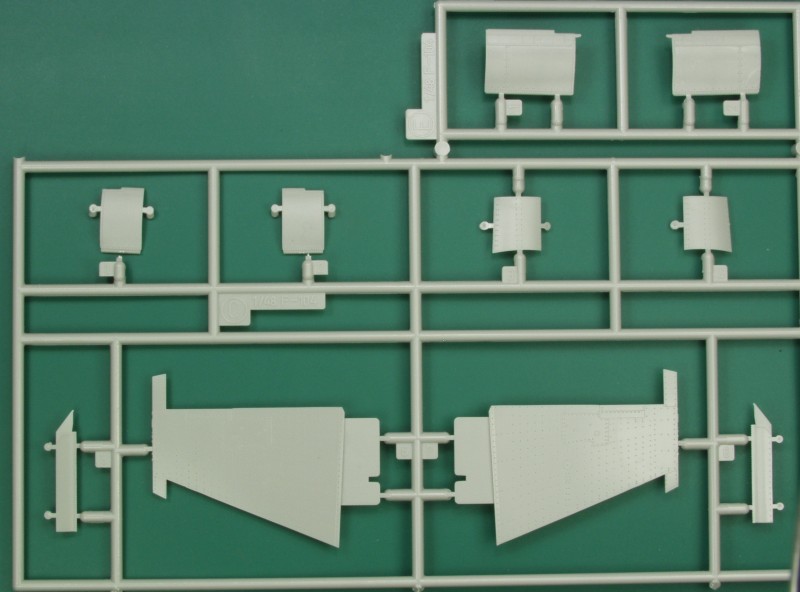
Then the lower wing parts and control surfaces as well as horizontal tail.
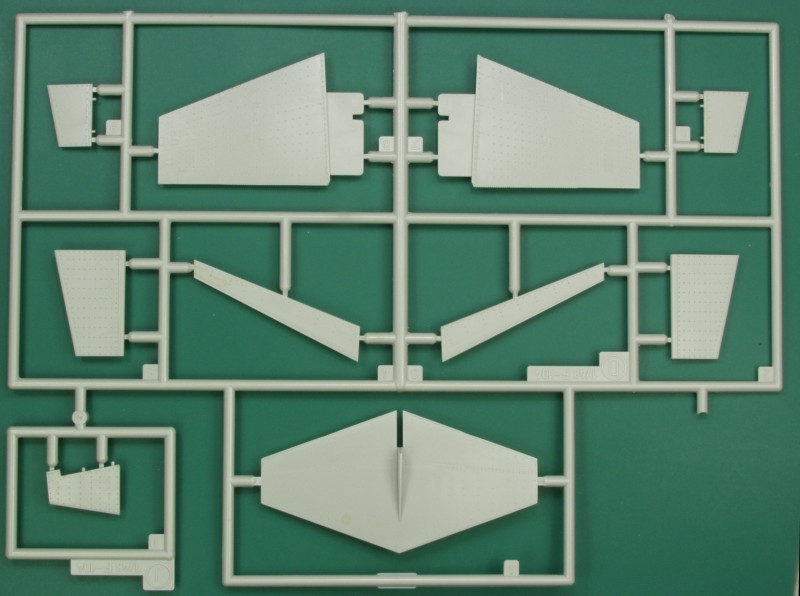
The next one has the cockpit tub, tail feathers, and main gear bay parts and some other parts as well.
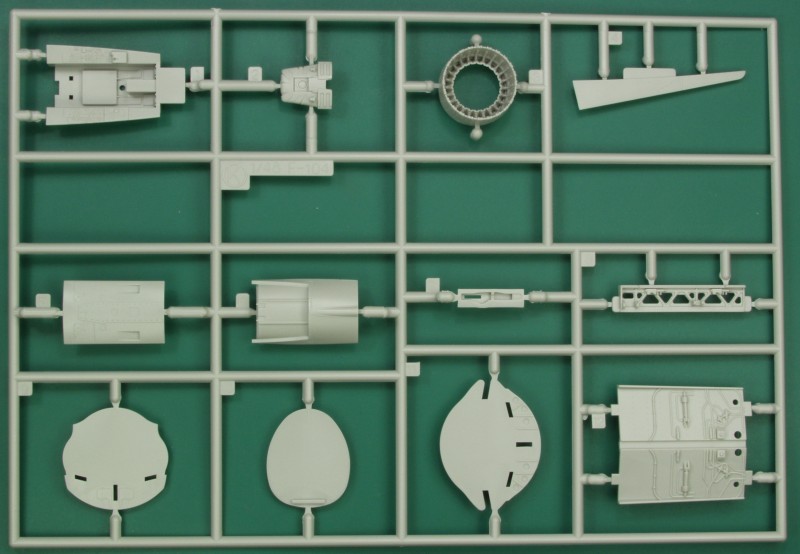
The next one includes the landing gear parts, instrument panel, nose wheel, exhaust turbine and flame holder.
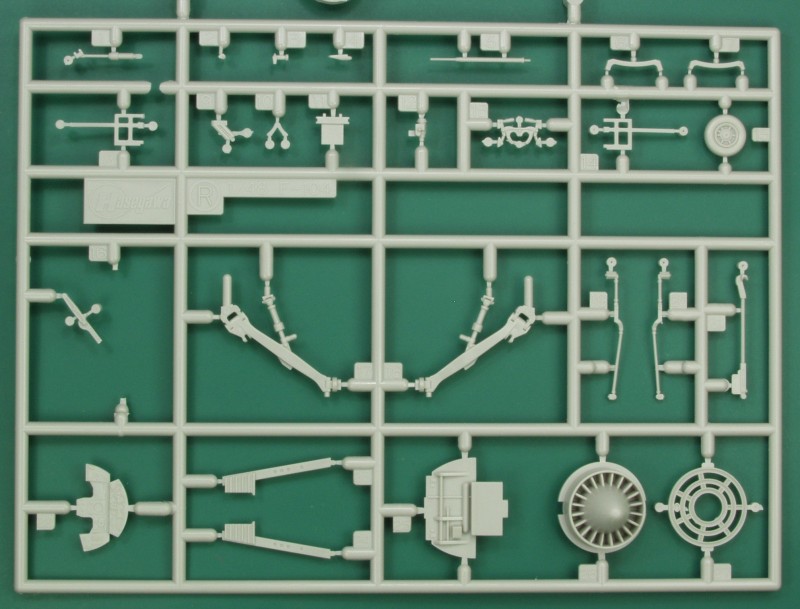
Some odd and ends on the next one of which there are two, the exhaust duct halves, missile launching rails, tires and wheel hubs and fuel caps.
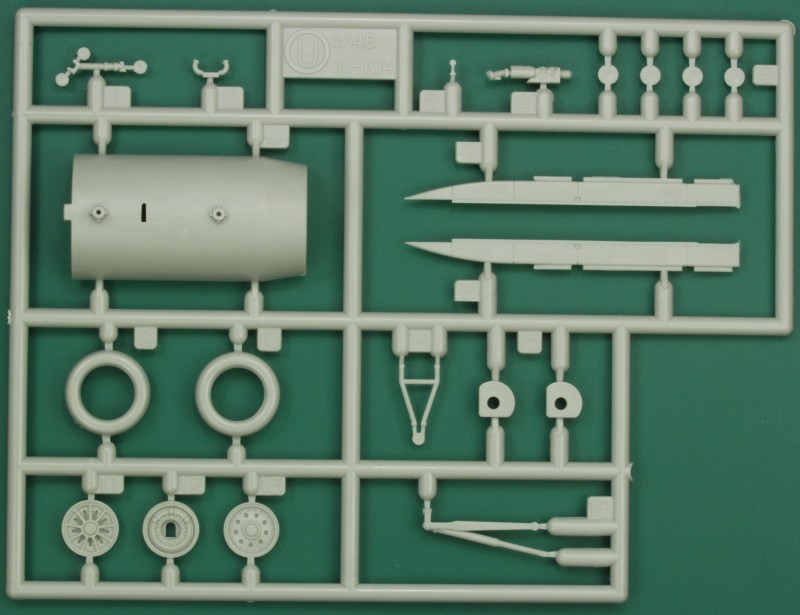
The nose gear bay and the tip tanks and fins are next.
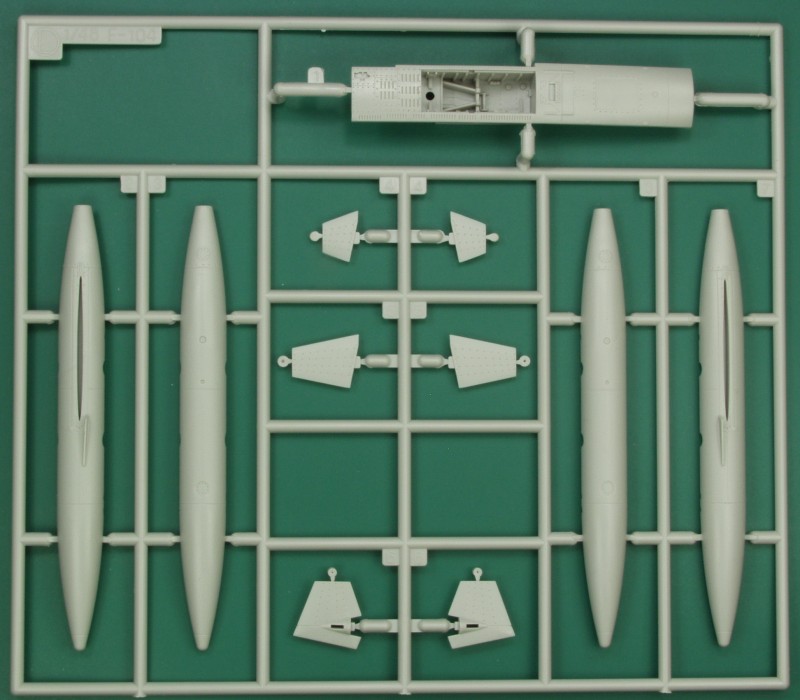
And finally bang seat parts and the refueling probe
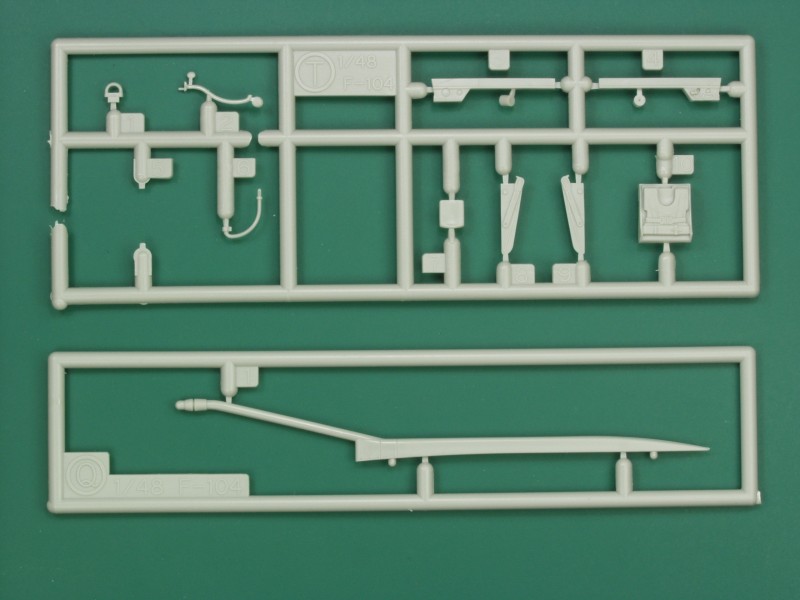
The clear parts are nice and clear but are a bit thicker than the norm for newer kits and do have some optical distortion.
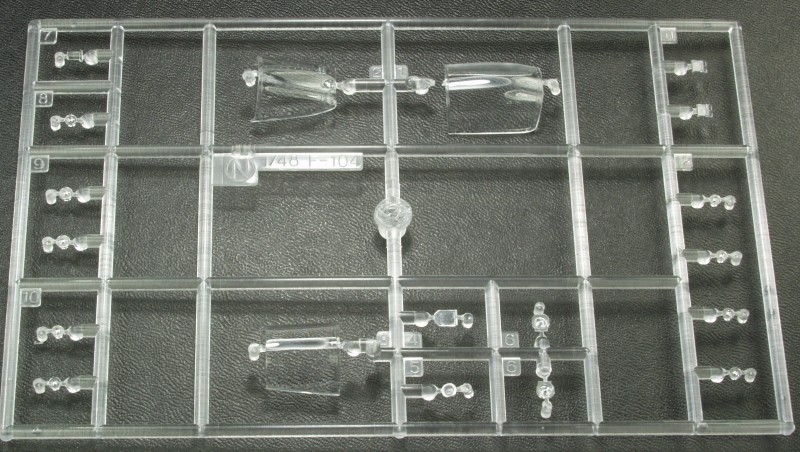
The decals are typical Hasegawa for the time period, the white is more of a cream color though it doesn't show well in this scan. They are also a bit thicker than what you find on after market sets. The decals provide marking for two aircraft, both from the Vietnam era, one in camo and one natural metal, both from the 479th TFW, the natural metal one from the 1965 deployment and the other from the 1968 deployment. As you can see there are a ton of stencils. The decals are are nicely printed and in register but have a lot of excess film with them and I have had mixed results using Hasegawa decals. Since these are 15 years old I will probably go with an after market set.
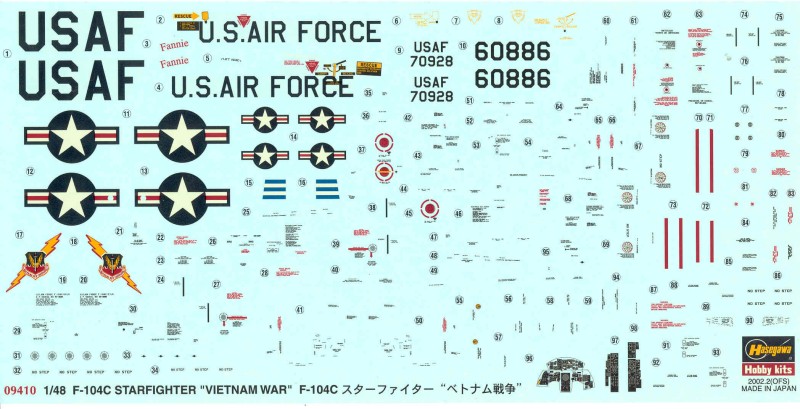
The instructions are printed on a long sheet folded to form four panels. The front panel has history and specifications, the next three are the assembly diagrams done in 18 steps. the next panel has a parts map and paint chart referencing Gunze numbers and also with generic names and FS numbers where applicable. The last two panels have the painting and marking diagrams.
After Market Goodies
I decided to go with an after market bang seat from Quickboost (48504), no assembly required other than removing the pour stub plus it has a molded on harness which almost always looks better than PE . Very nicely molded with no surface defects.
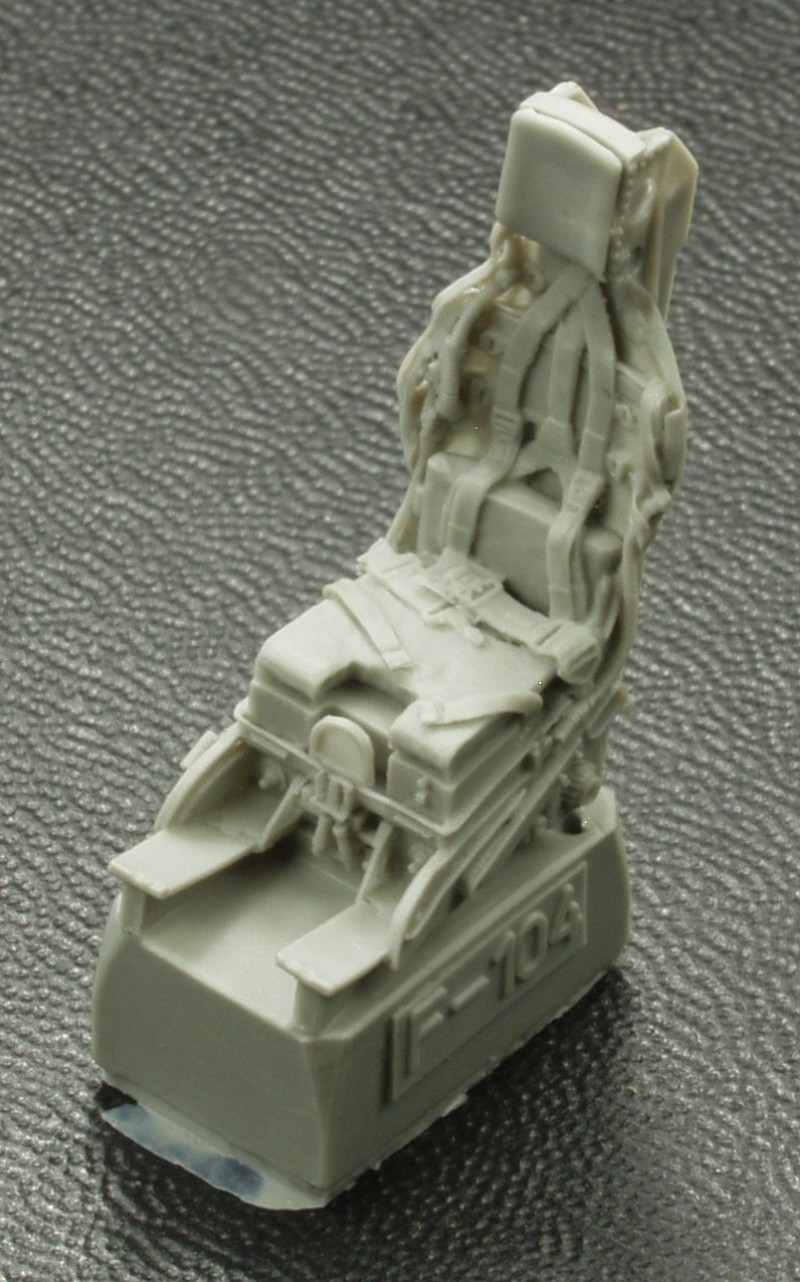
And since I was not sure how good the kit decals were I went with this set from Caracal, printed by Cartograph. The set provides marking for nine aircraft, two in natural metal and seven in camo. The main difference between the camo versions is tail number and aircraft name. They are printed to Cartograph's high standards and should work well.
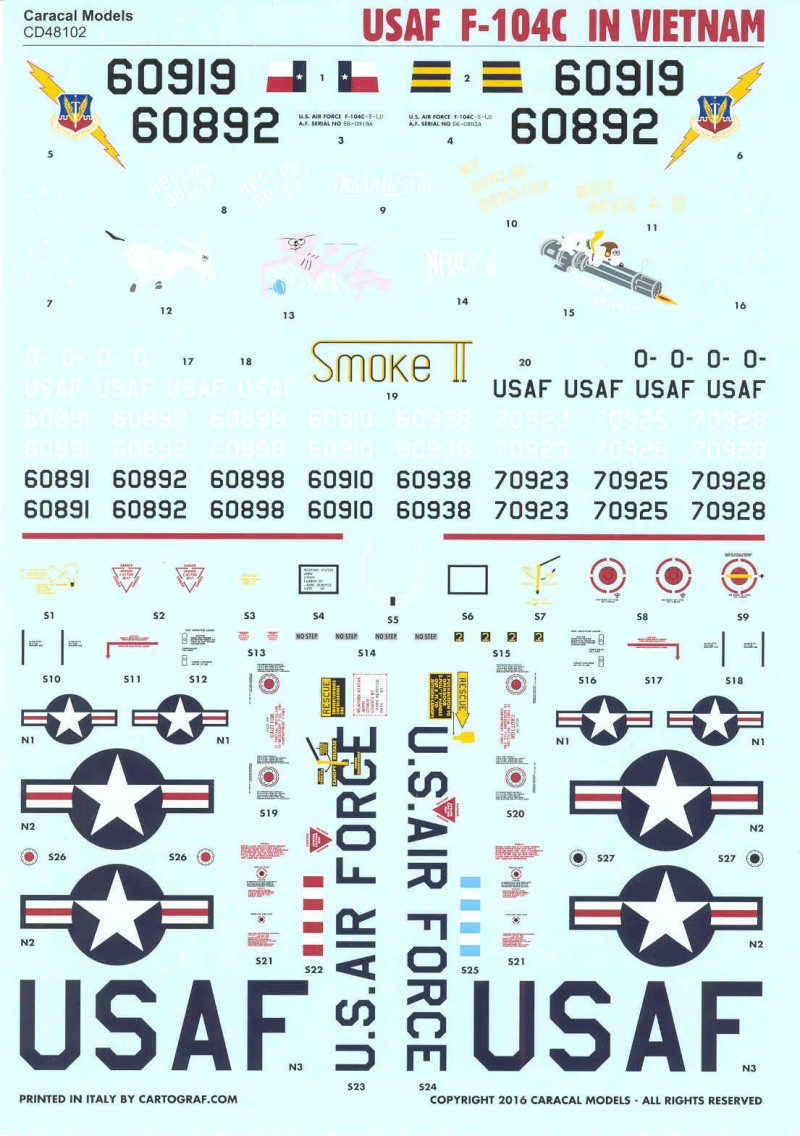
Conclusions
This is a very nice kit that has held up well over time and I have found nothing to indicate there any major assembly issues. It would have been nice if Hasegawa would have provided missiles to put on the launch racks but I guess that would cut into the sales of their weapons sets. Recommended !
Links to kit build or reviews
A build review can be found here, same kit, different markings
References
F-104 Starfighter in Action by David Doyle
Back to
the Misc US page